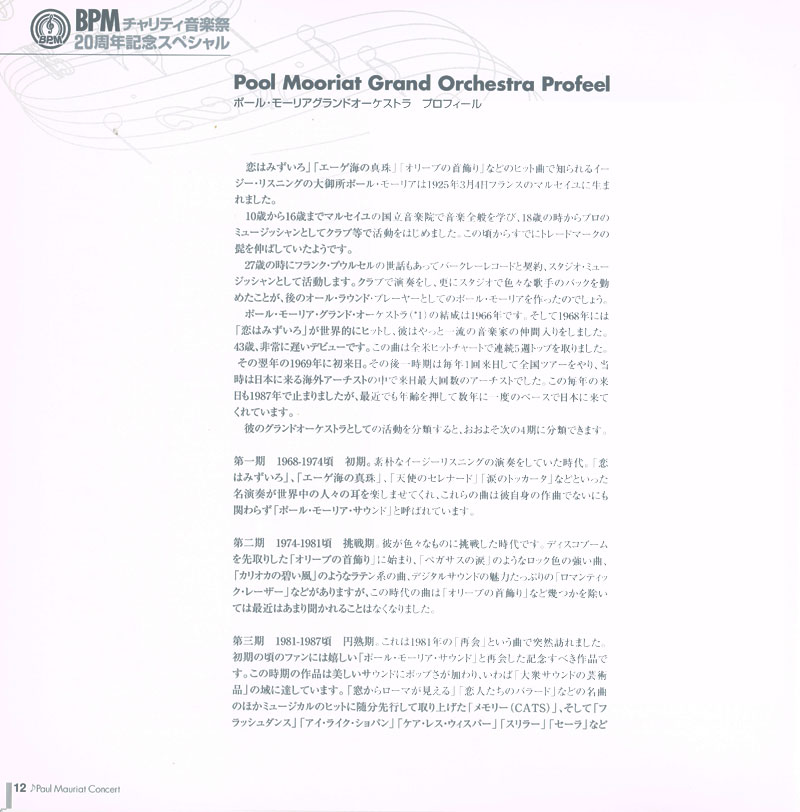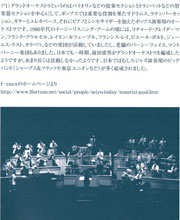JAPAN 2003 CHARITY
PMGO - Paul Mauriat Grand Orchestra:
- Japan Tour Program 2003

Loose translation into English:
Pool Mauriat Grand Orchestra Profeel *
Paul Mauriat, one of the greats of easy listening, known for hits such as "Koi wa mizuiro (Love is blue)," "Penelope," and "El Bimbo," was born on March 4, 1925 in Marseilles, France.
He studied music in general at the Conservatoire National de Musique in Marseille from the age of 10 to 16, and began working as a professional musician in clubs from the age of 18. At that time, he was already growing his trademark beard.
At the age of 27, with the help of Frank Pourcel, he signed a contract with Berkeley Records and became a studio musician. Playing in the club and backing various singers in the studio may have made Paul Mauriat the all-around player he would later become.
The Paul Mauriat Grand Orchestra ("1") was formed in 1966. At the age of 43, he made his debut very late in life. The song topped the U.S. charts for five consecutive weeks.
The following year, 1969, he made his first visit to Japan. For a period of time after that, he came to Japan once a year for a nationwide tour, and at that time, he was the artist who came to Japan the largest number of times among foreign artists coming to Japan. This annual visit to Japan stopped in 1987, but he continues to come to Japan once every few years as he continues to push his age.
His activities as a member of the Grand Orchestra can be roughly classified into the following four periods.
First period 1968-1974 circa early period. A period of simple easy listening performances. His masterpieces such as "Koi wa mizuiro (Love is a light blue)," "Penelope," "Serenade of an Angel," and "Toccata" delighted the ears of people around the world, and these songs are called the "Paul Mauriat sound" even though they were not composed by the composer himself.
The second period, circa 1974-1981, was the period of challenge. This is the period when he tried many different things. Starting with "El Bimbo," which anticipated the disco boom, there were rock songs like "Tears of Pegasus," Latin songs like "Blue Wind of Carioca," and "Romantic Laser," which had a lot of digital sound appeal. With the exception of a few songs from this period, not many songs from this period are heard these days.
The third period, circa 1981-1987, was a period of maturity. This came suddenly with the song "Reunion" in 1981. This is a memorable work that reunited the "Paul Mauriat sound," which fans of the early years will be happy to hear. The works from this period have added pop to the beautiful sound, and have reached the realm of "popular sound art" so to speak. In addition to such classic songs as "I Can See Rome from My Window" and "Ballad of Lovers," the album also includes "Memory (CATS)," which preceded the musical hit by a long time, as well as "Flashdance," "I Like Chopin," "Careless Whisper," "Thriller," "Sailor," and many others.
* They must meant "Paul Mauriat Grand Orchestra Profile".
